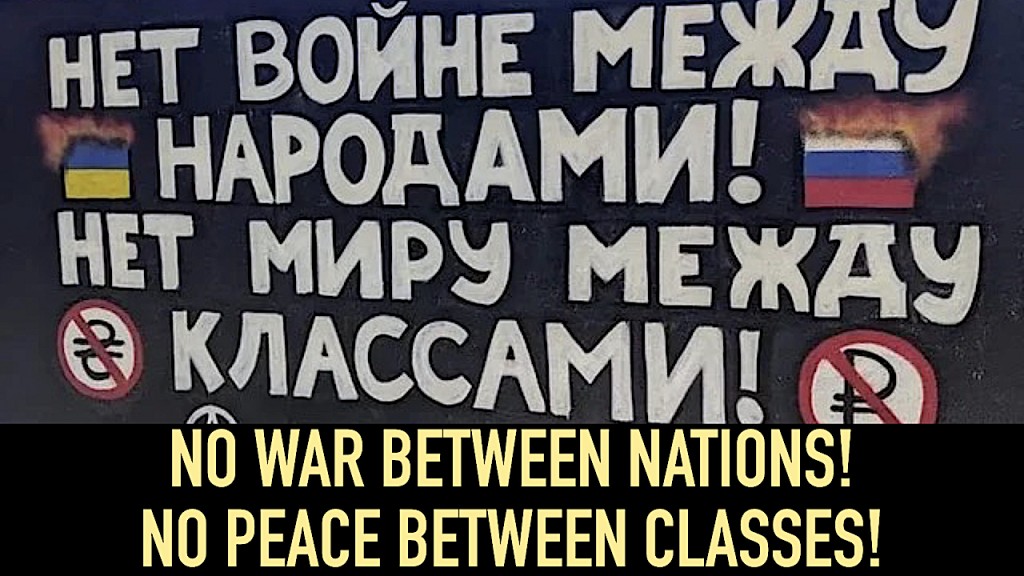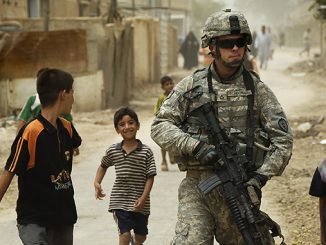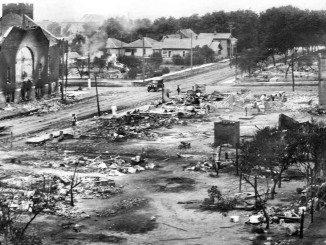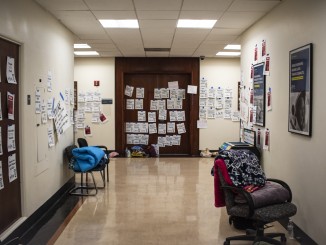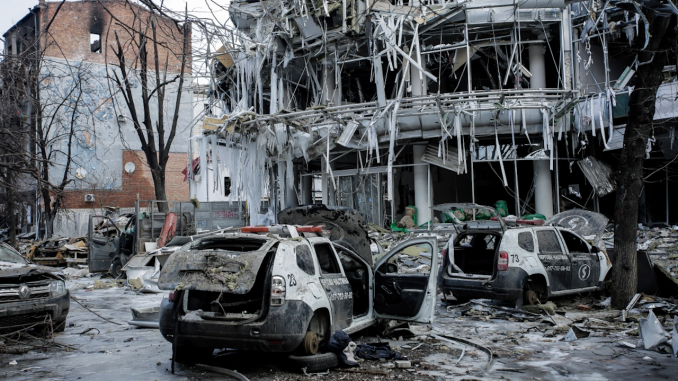
The following is the text of the presentation at Speak Out’s town hall on March 19, 2022. Here is a link to the video recording of this presentation.
Before we start, I just want to say again that we are not experts on this conflict, and we certainly are not the ones facing these atrocities, fleeing bombs, and losing our loved ones. But the purpose of tonight is simply to provide some context so we can have a discussion and come away with a better understanding. And hopefully we will be able to more clearly see how this war implicates all of us, and to find a role we can play in opposing it.
For over three weeks now we have witnessed Russia’s attempt to annihilate Ukraine. Hundreds of Ukrainians are dying every day. Russian forces are targeting cities, hospitals, bridges, power plants, schools, residential buildings. All with the clear intention of depriving Ukrainians of food, water, electricity, heat, and medicine.
Soon hundreds of thousands of Ukrainians will face starvation amid freezing temperatures — if they haven’t already. In towns and villages patrolled by Russian soldiers, civilians are being kidnapped and shot down.
Already over three million Ukrainians have fled the country as refugees. But millions more are trapped as conditions continue to worsen. Here’s just one glimpse from the town of Mariupol from a statement by the International Committee of the Red Cross who’s been operating in the city:
“People of all ages, including our staff, are sheltering in unheated freezing basements, risking their lives to make short runs outside for food and water … Dead bodies of civilians remain trapped under the rubble or lying in the open where they fell … Hundreds of thousands of the city’s residents are now facing extreme or total shortages of basic necessities like food, water and medicine … The human suffering is simply immense.”
And it is also important to mention the resilience of Ukrainians, millions who have vowed to stay behind and fight Russia’s decimation of their country. Many have enlisted in the Ukrainian army. Many others have formed local militias and have prepared to attack Russian soldiers as they enter their cities. Many have chosen to risk their lives to try to help move fellow civilians out of the country to safety and get needed supplies in. We are seeing the mobilization of ordinary Ukrainians to do whatever is in their power to push back against Russia’s clear attempt to destroy their country.
Russia has one of the largest militaries in the world, and outguns Ukraine in every category by enormous magnitudes, and continues to escalate its attacks each day. It seems intent to continue this aggression and seize as much of the country as it can, and try to overthrow the Ukrainian government .
Often here in this country, the horrors of war and occupation are shielded from us because U.S. imperialism is the one carrying out the atrocities on a population that has been deemed less human. But this time, since it is Russian imperialism that is carrying out a war of destruction and occupation, we have been able to get a better glimpse of what this destruction really looks like.
This is not because those in power in the U.S. and NATO countries care about the Ukrainian people. It’s because they want us to line up behind their policies and support them in whatever actions they carry out. They want us to agree to pay our own price through increased military spending, rising gas prices and other essentials, and whatever else they have in store.
Let’s hope this horrific war on the people of Ukraine and their determined resistance can become a wake up call for millions around the world about the true nature of the system that threatens all of us.
Ukraine: A Long Struggle for Independence
Ukrainians’ fight for independence is not new. The history of Ukraine is a long history of struggle against one imperialist power or another. Before Ukraine officially declared its independence in 1991 with the collapse of the Soviet Union, there were several key periods where Ukraine was caught in the grips of various competing powers. To understand the situation of Ukraine today, we have to understand some background about the Russian Revolution.
Before the Russian Revolution of 1917, for a few centuries Ukraine was part of the Russian empire of the Tsars. Tsarist rule was maintained through a policy of brutal domination and oppression over the many different groups and nationalities trapped within the Empire, like a prison.
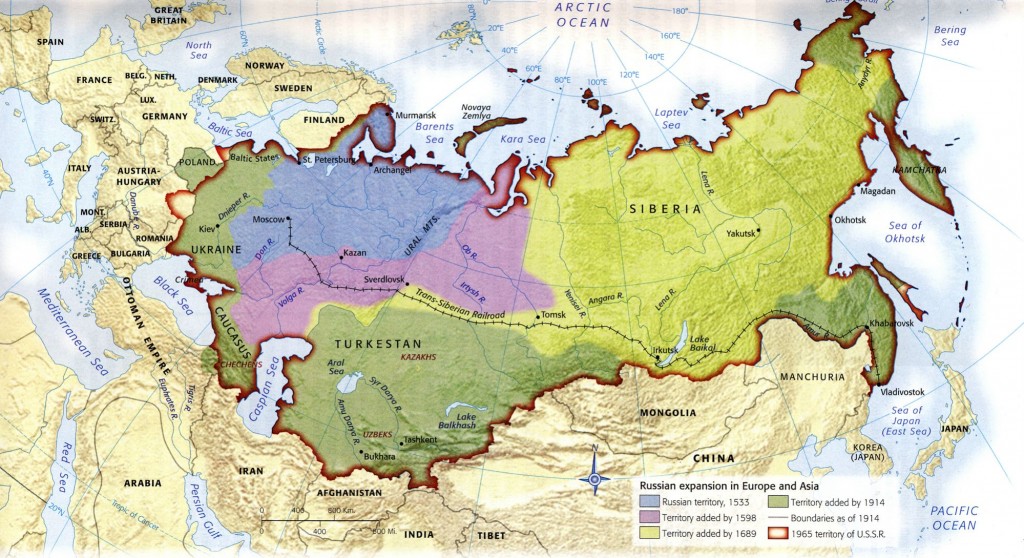
This is why Lenin, a Russian revolutionary, referred to the Russian empire as “The Prison House of People.”
But in 1917, the workers and peasants of Russia rose up and overthrew the Tsar, broke up the massive estates of the landowners, and took over the industries — this was a democratic mass movement from below, and it was an inspiration for working people around the world.
The Bolshevik party led the revolution, and they had a majority of support in the Soviets, which means councils. These were mass democratic organs of power, created by the workers and peasants, and they became the basis for a new state.
The Bolsheviks’ policy guaranteed the right of self determination for all nations. They saw the revolution as a way to a way to unlock the prison, that is to free all the various nationalities under the domination of the Russian empire that was now overthrown. They encouraged the people of the different territories to rise up and overthrow their own local ruling classes and choose their own fate — that is, they could choose for themselves whether to join with the newly formed Russian Soviet workers state.
In 1917, Ukraine was well on its way to doing just that. But quickly the Russian revolution was strangled by the imperialism of Europe and the United States. And Russia was invaded by 14 countries. This launched three years of a bloody civil war, from 1918 to 1921.
The imperialists gave their full support to the counterrevolutionary army, and fought to overthrow the revolution and put the country back under the control of the Tsar’s old generals. And by the end of the civil war, though the counterrevolution was defeated, there were enormous deaths and the revolutionary forces were exhausted. A situation of desperate poverty was rampant, and for many people their only concern was for their own individual survival.
During the civil war the soviets no longer actively functioned and in their place a centralized bureaucracy grew. And after the civil war it eventually took over control of the whole state apparatus.
There were tens of thousands of dedicated revolutionary workers and peasants that resisted this bureaucratic take over, and fought to maintain the perspective and goals of the revolution. This was known as the Left Opposition, and it was led by Leon Trotsky, a leader of the Russian Revolution, born in central Ukraine.
But their efforts to oppose the bureaucracy were ultimately not successful, and many were killed or imprisoned or forced underground. And so, a few years after the Civil War, this centralized bureaucracy was able to firmly take power, with Josef Stalin at the head. Stalin was a long-time Bolshevik, but by then he had abandoned any prospects for international revolution, and replaced those with a renewed Russian nationalism, captured in his phrase “socialism in one country.” He blatantly opposed the Bolshevik’s policy of the right of nations to self determination.
Now at the head of this bureaucracy, Stalin carried out brutal policies of imprisonment, deportation, assassinations, relocations and various forms of government land seizures across the new Soviet territories.
Ukraine was a major battle ground during the civil war, and afterwards Ukraine’s hopes for independence were dashed under Stalin’s regime. From 1932 to 1933 Stalin sent Soviet troops into Ukraine and across Russia and seized agricultural lands at gunpoint, through a policy of forced collectivization. This led to a massive destruction of crops and livestock by the peasants.
In response, the peasants’ food was confiscated, and many were killed or exiled if they resisted. Millions of people died across the Soviet Union from starvation, including an estimated five million Ukrainians. In Ukraine, this horrific period of genocide is known as Holodomor.
Stalin then forced Russian-speakers from Russia to repopulate the Ukrainian areas that had been devastated, most numerously in Eastern Ukraine in the Donbas region. This a major reason the East of Ukraine has a higher Russian speaking and Russian-identified population than Western Ukraine.
In 1944, there was a similar policy in Crimea, where indigenous Tartars were deported and the area was repopulated with ethnic Russians.
Then during World War II, it was German imperialism, under the Nazi’s, that set its sights on Ukraine. About 3.5 million Ukrainians — 1.5 million of whom were Jews — were killed during Nazi occupation. In addition, about 3 million Ukrainians died during the war, fighting to defeat the Nazi’s and bring down German fascism.
The end of World War II brought a new standoff between rival powers in the world: with the Soviet Union and its allies on one side and the United States and its allies on the other, in what is known as the Cold War.
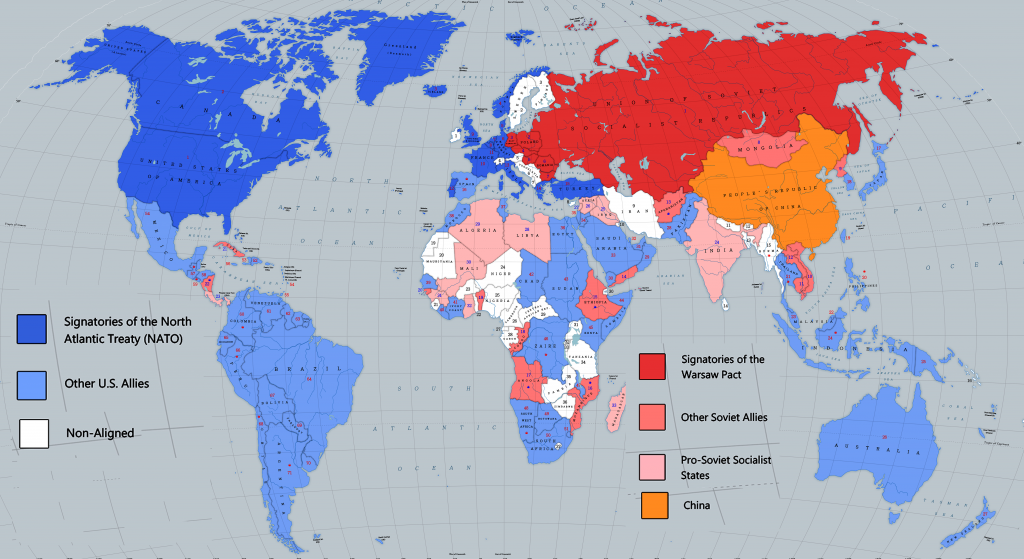
NATO (the North Atlantic Treaty Organization) was formed in 1949 as a military alliance between the U.S., Canada and several European countries prepared to attack the Soviet Union if any of their member states were threatened. For the next four decades of the Cold War, there were two rival camps, bitterly divided and on the brink of nuclear war. If this standoff ever had come to war, none of us would be here today.
Ukrainian Independence: Caught Between Russian and Western Imperialism
At the end of 1991, the Soviet Union was formally dissolved and Ukraine and other nations finally got their independence. In Ukraine’s vote for independence, 84% of the population participated and more than 92% voted for independence from the Soviet Union. Every region had a majority in favor of independence; the lowest majority (54%) was in Crimea, and in the majority-Russian-speaking areas of the Donbas, over 83% voted in favor of independence.
In 1994 as part of an effort to remove and destroy former Soviet nuclear warheads still stationed in Ukraine, the U.S., Russia and the UK signed the Budapest Memorandum, which recognized the independent status and borders of Belarus, Kazakhstan and Ukraine, which included Crimea. This memorandum was to assure the territory and sovereignty of these three newly recognized nations. They would agree not to intervene militarily or use economic coercion to influence the politics of those countries.
The first decade of Ukrainian independence in the 1990s was very difficult economically. Ukraine quickly came under the enormous economic pressure of the United States and eventually also of the European capitalists, with billions of dollars given in loans to Ukraine over the next several years. And at the same time, the country was ruled by corrupt officials and oligarchs who only cared about enriching themselves.
Since 2000, the economic situation of Ukraine hasn’t changed much. It has remained saddled with the repayment of loans to the International Monetary Fund and various European and U.S. banks. Ukraine remains the poorest country in Europe, with their economy still in the hands of corrupt oligarchs. Its debt has swelled to about $129 billion today, that’s almost 80% of the value of its entire yearly economy.
Putin Comes to Power in Russia
What does change during this period is the political leadership in Russia. Putin came to power in 2000 with the resignation of Boris Yeltsin, and has been in power ever since, relying on coercion, corruption, fraudulent elections, and rewriting the constitution to extend his term.
Putin comes from the former KGB, which was the Soviet brutal secret police. Using that secret police apparatus, Putin has been able to control the government and to centralize power in his own hands. He has put down any internal challenges to his power, with threats, imprisonment, assassination. Nearly every year since Putin came to power, there have been assassinations of journalists and others who’ve criticized Putin’s regime.
Since coming to power, a central part of Putin’s economic strategy has been to use Russia’s plentiful gas and oil resources to build up Russia’s state-owned energy sector, which today accounts for about 40% of Russia’s federal budget revenue, and up to 60% of its exports. With these enormous energy revenues controlled by the government, Putin has been able to increase Russia’s weapons production and build up its military into with the goal of both retaking what it claims as lost territory, as well as building up new alliances around the world.
Putin is a fierce Russian nationalist, who wants to restore Russia to what it was under Tsarism and Stalin’s rule. When Putin first came to power, he reignited ten-years of war to takeover Chechnya, killing about 200,000 civilians. With the economic crisis of 2008, Putin launched an invasion of the country of Georgia, taking about 20% of its territory. Putin also later intervened in Belarus and Kazakhstan to support pro-Russian puppet regimes against massive popular uprisings.
From the Orange Revolution to the 2014 Maidan Revolt
During this 2000s, Ukraine was increasingly led by politicians that are either under the pressure of European and U.S. economic interests, or led by corrupt puppets loyal to Putin and Russia.
From 2004 to 2005, there was a popular movement leading to what became known as the Orange Revolution. It began when the Ukrainian population poured into the streets to protest the fraudulent election of the pro-Russian puppet Viktor Yanukovych who was prime minister from 2002 to 2004. Yanukovych comes from the Russian-dominated area of eastern Ukraine. In addition to being fed-up with government corruption, average Ukrainians were also sick of the promises of economic growth and better living standards that never materialized.
Because of the protests and accusations of fraud, there was a second round of elections and Yanukovych lost his bid for President — but remained prime minister. Instead, Ukrainians elected Viktor Yushchenko as president. He was elected promising economic growth, a break with Russian corruption, and to establish new relations with Europe. But he didn’t deliver on any of these promises, and instead saddled the country with increased debt to the western imperialists.
And soon the global 2008 economic crisis only made a bad situation even worse. Unemployment in Ukraine tripled, and the economy shrank heavily while poverty worsened.
With the population fed up with Yushchenko, the Russian puppet Yanukovych was elected President in 2010. This time he tried to paint himself as being independent from Russia, promising to fix the economic situation, and to re-engage with Europe.
He promised to sign another trade deal with the European Union. This would have increased trade with Europe, relaxed travel restrictions, but also, once again increased Ukraine’s debt burden to European banks. But in 2013, at the very last minute, Yanukovych refused to sign the deal and instead signed a deal with Russia.
This was the last straw for the Ukrainian population, and sparked what is known as the Maidan revolt. Tens of thousands of people flooded the streets of Kyiv. The grievances expressed in the protest quickly went far beyond simply ousting Yanukovych. People expressed enormous economic discontent — their buying power was worse, their wages were less, their pensions were being cut. Many people connected their own economic misery to Russian corruption, to the economic debt to Europe, and to the corrupt oligarchs hoarding the wealth of Ukraine.
Yanukovych tried unsuccessfully to use government forces to break up the protests. By February 2014, he was ousted and fled the country.
In this enormous protest movement there were participants of various political tendencies, including some individuals and groups supported by the U.S. and other NATO forces. And within the protests, there were also some real fascists with racist, extreme nationalist, anti-Jewish, and anti-Muslim ideas. They were able to play a prominent role in the street fighting because they were one of the more organized sections within the movement.
Though they weren’t responsible for the uprising, and they certainly didn’t lead it, their participation did help lead to a greater profile for fascist groups, and helped to contribute to the continued growth of far-right networks afterwards. But despite Putin’s claims, they have never received popular support, and certainly have not played a prominent role in the government.
Two weeks after Yanukovych’s ouster, and in response to this enormous display of independence by the Ukrainian population, Putin launched an invasion to take over the Crimean Peninsula in southern Ukraine. At the same time, Pro-Russian nationalists in the Donbas region of Eastern Ukraine demanded their independence from Ukraine. They received support from Russia in their fight against the Ukrainian military. And in May 2014, Russian troops were sent in and turned the fighting into a long drawn-out war. This war was used by Putin as his pretext for launching the recent invasion, claiming to be protecting two new breakaway states in the Donbas.
A World of Increasing Imperialist Rivalries
It’s important to emphasize that this is a war launched by Russian imperialism to crush the aspirations of the Ukrainian people to have an independent nation. But this war has also laid bare a new period of inter-imperialist rivalry, a competition for world dominance between the U.S and Europe on one side and China and Russia on the other.
In the U.S. we have endured an onslaught of propaganda from the media and the Biden administration. They claim they are outraged by the sheer brutality of Putin’s invasion and have deep concerns for the Ukrainian people. This is total hypocrisy.
Since the collapse of the Soviet Union, the U.S. has seen itself as the sole superpower, and has taken every opportunity to expand its global dominance. It has expanded NATO military forces and bases into eastern Europe encircling Russia, including providing nuclear weapons systems in Poland, which is about 100 miles from Russia. For years the U.S. has flaunted the idea of Ukraine joining NATO, bringing its weapons systems directly to Russia’s borders.
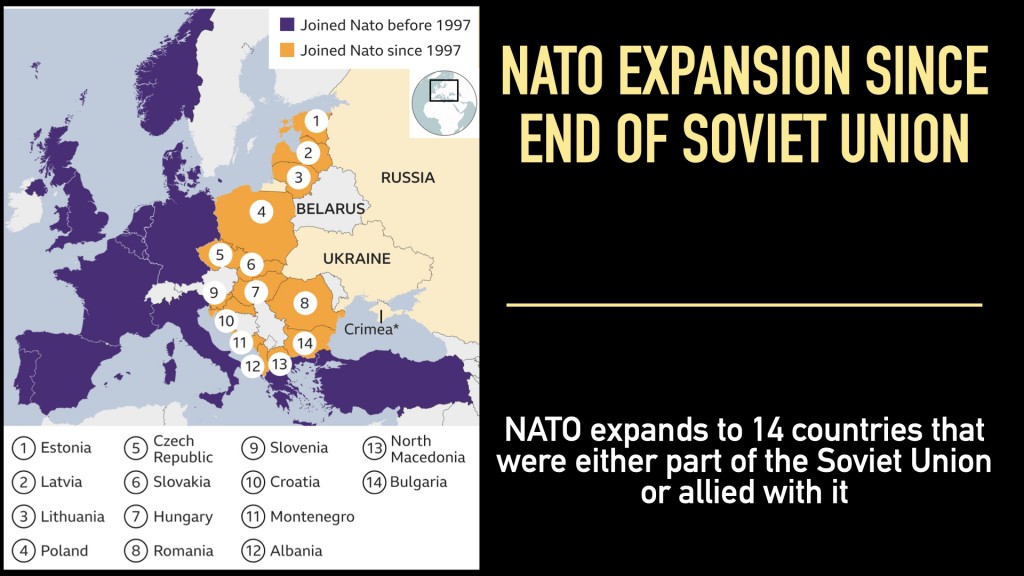
The U.S. has expanded its vast empire of military bases around the world to 750 military bases in 80 other countries, and has continuously increased its military spending, doubling it since 1991.
The U.S. politicians call out Russia for war crimes for its indiscriminate bombing of schools and hospitals and the use of cluster bombs and white phosphorous weapons. But what were their invasions of Afghanistan and Iraq?
Since the horrific U.S. war on Viet Nam, we have heard U.S. politicians echo U.S. General Curtis LeMay’s threat to bomb Viet Nam “back to the stone age” about Iraq and Afghanistan. In Iraq and Afghanistan, the U.S. repeatedly used cluster bombs and white phosphorous, which sticks to the body and burns the skin down to the bone. They blew up hospitals and schools and water treatment facilities, and bombed funerals. All told, these horrific wars of destruction in Iraq and Afghanistan were responsible for the death of over one million innocent civilians, along with the displacement of at least ten million people.
This hypocrisy is similar for Europe. Take French President Emmanuel Macron. Who is he to act horrified about Russian imperialism when French imperialism has carried out military interventions in Mali and the Ivory Coast in Africa?
Much attention has been paid to the economic sanctions imposed by the U.S. and European governments, which have hit ordinary Russians very hard, decreasing the value of the ruble by about 40%. But meanwhile, Europe, especially Germany and France, continue to pay about one billion dollars per day to Russia to purchase its natural gas and oil. At the same time, the U.S. is doing everything in its power to increase its oil and gas extraction and delivery systems to replace Russia as Europe’s main supplier.
The world has entered a new era of intensified global conflict — a rivalry of imperialist powers, what some call “the great power competition” of a multi-polar world, between the U.S. and Europe on the one hand and Russia and China on the other. This is a competition to redivide the world into new spheres of influence, for new terms in the global arrangement of economic and military domination. It is a competition for resources, for markets, for energy, for control of ports and sea passageways, and more — all leading to an increased military presence, and the potential for massive military conflict.
Russia’s war on Ukraine has led to both France and Germany greatly increasing their military spending. China has also vastly increased its military spending, tripling in the last ten years. Russia’s war in Ukraine has already sent grain and food prices to their highest recorded levels, putting hundreds of millions at risk of food shortages. Biden has made repeated promises of increased military spending and increased fossil fuel extraction, recently at the cost of reducing spending on public health and pandemic prevention.
Their race for further domination of fossil fuels, just means even greater climate catastrophes. Their system threatens all of earth’s ecosystems and all of humanity. It’s clear what the future of their system has in store for us: massive wars not only on defenseless populations, but between imperialist powers, armed with nuclear weapons.
Conclusion
When we face the enormity of the situation in Ukraine and all that is at stake there, the challenges we confront in opposing this war can seem overwhelming. So faced with all of this, what do we do?
First, we cannot choose sides between their forces of destruction, between one imperialism or another. Our choice is not to support Biden, NATO or Putin’s Russia. We must side with the people of Ukraine in their resistance against the Russian invasion. If their sources of weapons come from NATO forces, that is not for us to judge.
But we also need to understand the motivation of NATO and the U.S. They are not defending the interests of the people of Ukraine. They are defending their goals of controlling the region. They can send weapons but at the same time they don’t offer to eliminate the nearly $129 billion of debt that the U.S. and its European allies have imposed on Ukraine — and will still remain whenever when this horrific war ends.
We must support the right of nations to self determination, the right of peoples to determine what kind of government they want, the kind society they want to live in, and not have it dictated by outside forces. This is the same for the people of Russia and the rest of the world — including the U.S. Our view, as revolutionary socialists, is that this means the greatest degree of democracy possible — that is, the people who do the work have the right to make the decisions over their lives.
With this conflict, along with past the two years of this pandemic, and with the threat of environmental destruction — we can be confident that more people will begin to recognize the importance of confronting the forces that are arrayed against us. We do have the power to bring about the changes that are necessary, but it will take a determined effort and organization. That’s what Speak Out stands for.
I will end with this, a slogan from a several different Russian socialist and anarchist groups opposed to Russia’s invasion of Ukraine:
No war between Nations and No peace between classes.
